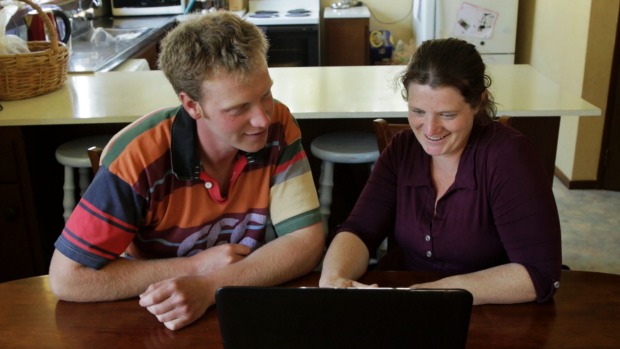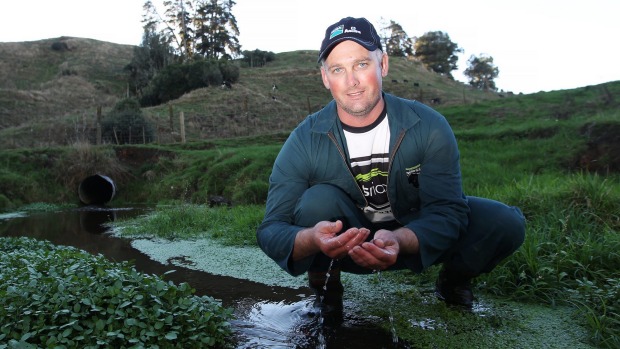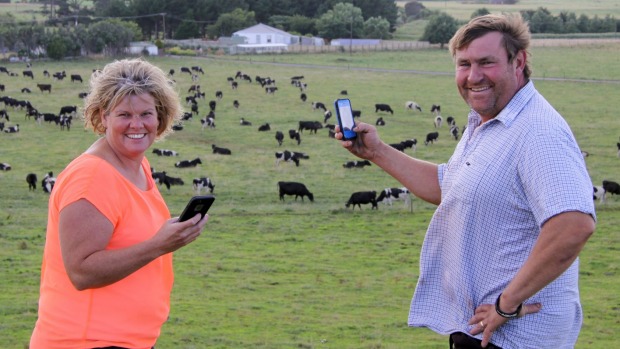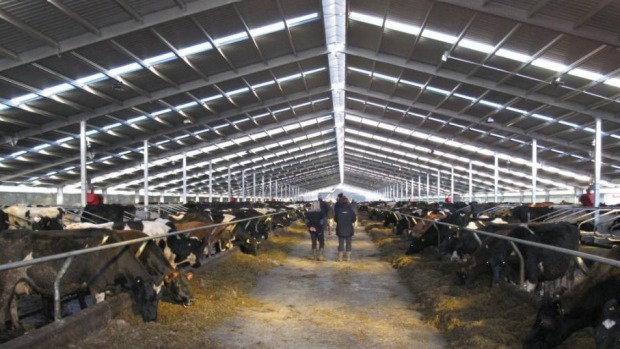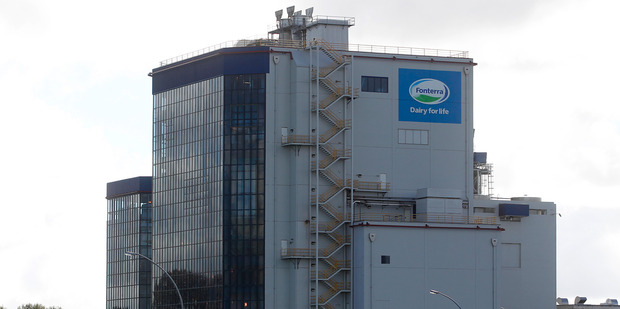Source: Taranaki Daily News
A South Taranaki dairy farming couple remain fervent advocates of Twitter as a farmers’ forum, although hindsight has made them temper their use of social media.
Mokoia variable order sharemilker Paul Johnston was caught up in last month’s Twitter debate about a Taranaki Daily News opinion piece on dairy farming by columnist Rachel Stewart.
Stewart complained to police after the column generated what she said were sexist, standover tactics and personal slurs on Twitter by farming leaders who should know better. She also received a threatening hand-written message in her letterbox.
While she welcomed robust debate, she had been “thrown” by the hate demonstrated in the tweets and said overtly sexual or derogatory responses were offensive and unnecessary.
Johnston said while Stewart made some fair points in her column, he didn’t like her tone, so he posted to Twitter what he intended to be tongue-in-cheek comments about her.
Stewart thinks many farmers don’t appreciate the significance of their Twitter postings and perhaps don’t realise their comments can go viral and far beyond their intended audience.
Comments they might make around the dinner table or in the pub should be kept private rather than exposed on social media. “Because they’ll come back and bite you,” she said.
Johnston said he had moved on since the discussions about Stewart’s column.
“But now I’d think twice before making such a tweet.”
The debate about the column was preceded before Christmas by a photo he posted on Twitter of his children sliding in cow excrement. It gained 100-odd favourites and retweets around the world and also created a furore after Venture Taranaki put it on Facebook.
He said about 5 per cent of comments questioned the couple’s parenting skills.
“Twitter’s a forum where people vent and it can get nasty. Stuff can be taken out of context and blown out of proportion. So we’ve learned not to jump in.”
Noting Twitter was a public platform, wife Sue said the reaction showed them they had to be aware of other people’s perceptions. “We’re now more careful of Twitter.”
The couple are in their first season as variable order sharemilkers on a 200ha milking platform south of Hawera, where they milk 520 cows year-round.
Paul Johnston said negativity on Twitter could put some people off. He’d like more farmers and rural professionals to participate to realise the untapped potential it had in Taranaki.
“We need to showcase to the world how we produce food,” he said.
“We get a bad rap from some sections of the media and we are judged on the ones that let us down. Twitter is a fantastic forum to show consumers where their product comes from and how it’s produced.”
The rugby fan signed up to Twitter in 2010, after noticing interaction among All Blacks, provincial players and rugby commentators via Twitter on a rugby website.
“I found it great to have players like Piri Weepu reply and discuss points or ideas.”
Joining Twitter could be daunting. “Using 140 characters can seem puzzling, but once you get the initial gist of it, follow a few farmers and take their lead, it has massive potential.”
He follows about 1100 people on Twitter and a similar number follow him.
“Looking at profile pages of people I follow usually highlights like-minded, interesting, or informative accounts. The Twitter app also recommends accounts that maybe of interest.”
He said Twitter brought information to his farming business quickly.
“I can put a question out there with a photo, say, about pasture, and – boom – you have instant information.
“It’s provided by reliable individuals or companies. I can ask a question relating to grazing, post a picture of a weed, for example, and within minutes there will be replies, advice and information.”
Vets, farm advisers, DairyNZ consulting officers, agronomists, farmers could all be found on Twitter. “The potential for networking and discussion is endless.
“It is a different avenue than a discussion group, but has the same effect – a bit like a conference call. Tapping into the wealth of knowledge and expert advice has massive benefits for any business.”
He checks Twitter in the morning while he’s getting the cows in for milking.
“Sitting on the bike in the dark, I can watch what farmers in the UK are doing because they’re at the end of their day. I just flick through it and wait for something to grab my attention.
“Having breakfast and at lunchtime, I’ll often have look at Stuff (.co.nz) and at Twitter.”
A Taranaki meet would allow tweeters to get to know each other. “There are some amazing people I interact with that I would like to meet in person and I owe a few beers to a number of followers for advice.”
Sue Johnston joined Twitter a year ago and enjoys its immediacy.
“Social media isn’t going to go away, so you may as well be involved. But how you manage it is important.”
One night a light-hearted tweet from her husband to “sort those kids out” generated a response from one of their followers: “New-age parenting”.
On Twitter she has caught up with an old school friend now farming in the South Island.
She sees Twitter as a tool that will help the couple grow their business and career.
“Twitter puts you out there, for connections and jobs. As a mum of three (aged between 4 and 7), I find it nice to interact with other farming mums and professionals.
“Absolutely more Taranaki people could get on to Twitter. It would be awesome to see more farmers and wives/partners get on board, so your knowledge grows.”
New Zealand Sharemilker/Equity Farmer of the Year Charlie McCaig, of Te Kiri, joined Twitter just over a year ago, has almost 600 followers and follows a similar number.
He said Twitter allowed users to engage in discussion and debate and to post local events.
“It’s like an enormous, never-ending discussion group that doesn’t only include farmers.
“There is on-tap information and experience that comes from people with a huge array of backgrounds.
“I’ve lost count of the number of questions I’ve asked and the interesting responses I’ve received – from very basic, like ‘What sowing rate do you use for turnips?’ to more complicated ones like, ‘What are farmers doing to reduce farm working expenses?”‘
McCaig follows overseas farmers because he’s interested in their challenges and their perspective on New Zealand issues.
@GethEvans was on a working holiday in Te Kiri a few years ago. “Both being from the UK, we talked about common friends and experiences in New Zealand.”
Before Evans’ brother, Gwyn, visited New Zealand on a working holiday last year, he contacted McCaig about working for him and wife Jody.
“It’s a great example of the power of networking and it worked out perfectly.”
McCaig said Twitter discussions were generally mature. “It’s got a meeting-of-the-minds feel to it.
“The way Twitter is structured, that anyone can see your tweets and you can see anyone else’s, removes a safety net that other social networks have and makes people behave. It’s as if you are all in one big room so you can’t talk behind someone’s back.
“It also means that someone you haven’t spoken to before can read your discussion and throw in their contribution. The lack of privacy opens up the discussions across the globe, which is great if you’re looking for new insight into a problem.”
He said Twitter complemented other forums and offered new contacts and opportunities. It had put the couple in touch with numerous overseas visitors, partly because of their New Zealand Dairy Industry Awards success.
He believes Twitter provides a real opportunity for farming to tell its story to city people. “One of the biggest challenges farming faces is its image. I’d like to see more farmers using Twitter to show the world their daily lives.
“I think it would really help change some preconceptions about what it’s like to work on the land.”
Farming advocate Shona Glentworth joined Twitter 3 1/2 years ago, initially for her own off-farm business that assists businesses to develop. She soon saw the benefits of engaging with agricultural people and companies. She follows nearly 1800 people and more than 1300 follow her.
She said Twitter’s potential in Taranaki was untapped. Organisations like DairyNZ, Fonterra and LIC could add knowledge to discussions, ask questions, canvas opinions and build a sense of community.
“I really like Twitter. I think it is fun. There is a lot of learning and development of networks and community – it suits someone like me who has opinions, loves to talk, debate, engage and network.”
But it needed to be kept in perspective. “It doesn’t always allow depth, is not always an accurate reflection of what is happening off Twitter and it can be hard for some people to cope with the intensity (at times) and negativity (at times).”
Glentworth was one of a group of four who established Agchat on Twitter a year or so ago to mirror discussions in Australia, UK and US. The live weekly conversations are moderated by a person who tweets questions pertinent to agriculture. She said it was now in a hiatus and a more sustainable way of managing it was needed.
Dairy NZ consulting officer Michelle Taylor is a new Twitter user who joined late last year. Her followers and those she follows are a mixture of personal friends and agricultural tweeters.
“Twitter is instant and not long-winded – really good for capturing ‘now’ thoughts, ideas and feedback.”
It was a forum that allowed her to reach a wide range of farmers both nationally and internationally.
“Contributors to a conversation give some very extensive and sometimes humorous viewpoints.”
She believes the potential of Twitter is untapped in Taranaki. “Social media as a whole is an excellent way to get information out to people who don’t have endless time to read written text or search endlessly for information.”
However, she acknowledged it had its downfalls. “Not everything you read online is true, correct or factual, but is a good starting point for making an informed decision.”
